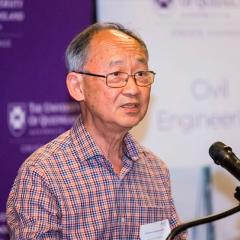University of Queensland postgraduate student Ashley Kerrison travelled to China in January 2019 as part of the Master of Sustainable Energy program.
While abroad, Ms Kerrison was impressed by the ambitious and complex plans she saw to create a low-carbon energy future. This is what she had to say about the two-week global study experience.
“Before travelling to China in January 2019, with the support of an Endeavour Mobility Grant, my impression of the China’s progress towards low carbon energy was somewhat naive.
“I already appreciated the Chinese energy strategy to limit the implementation of new coal projects, reduce air pollution and enable new low carbon technology, but once I was sitting in the meeting at the UK-China CCUS (carbon capture and storage) Centre in Guangzhou, I have to admit I was unprepared for how complex and ambitious the overarching strategy is.
“Seeing first-hand the immense scale of new builds each year, how strong and diverse investment is by both state and privately owned companies plus the reactive nature of policy in regards to geopolitical drivers, was like clearing the Beijing smog from my eyes!
“It was refreshing to see sites like that are technology agnostic. The Australian perspective in regard to energy technologies is like a wrestling match: you are either team fossil or team renewable. I was expecting this to be the same in China, but this was not the case.
“My favourite example of how fossil and renewables are working together to produce low carbon electricity, was visiting the China Resources Power (Haifeng) Plant. I have never visited a coal plant that was so clean both in appearance and low in SOX and NOX levels. Additionally, the plant had a solar farm, bays of MW scale batteries and a leading test carbon capture facility, all on site!

“Another surprise was the enthusiasm for establishing a strong hydrogen economy in China.
“Considering my impression was that China has only focused on renewables and replacing aging coal plants with new coal, it again reminded me that in a country like China, there is no silver bullet approach when it comes to technology solutions. It is better to balance a variety of technologies that can meet the nation’s energy needs.
“My final reflection on the trip would have been the moment I was sitting in a meeting at the Tsinghua-BP Clean Energy Research & Education Center at Tsinghua University with thermal engineering researcher Ma Linwei.
“Through our discussion it became apparent to me that regardless of the technology, a low carbon transition required, at the core of it, effective change management and well-designed policy to enable it.
“This trip helped me to understand the exponential scale and drive for new low carbon projects in China. I have also been reminded not to get caught up in the wrestling match between team fossil or team renewable.
Instead, my focus for my professional project, as part of the Master of Sustainable Energy, has shifted to researching and consulting with those who are designing effective policies and strategies which enable a sustainable low carbon future.
“I would like to again thank the UK-China CCUS Centre for the invitation to visit China to understand more about their direct projects as well as all the other academics and professionals we met on the trip.”
Ms Kerrison received an Endeavour Mobility Grant to support her global study and travel abroad. For more information on the Master of Sustainable Energy, please visit UQ’s website.



